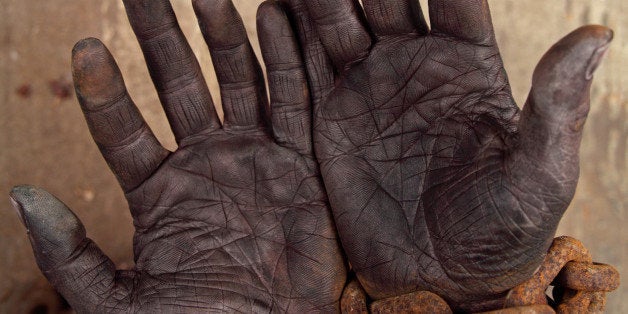
Debates about the upcoming Academy Awards focus on the relative lack of African American nominees. A less-examined aspect of this debate is that in some recent movies, African Americans are front and center. Those are movies about slavery, a seemingly 19th-century issue resolved in 1865 by Union victory in the Civil War. While legal slavery ended that year, its foundations in the US Constitution and American economy did not disappear. Tectonic forces, gathering power for 200 years made slavery possible; they were not obliterated by amendments written on paper. Those forces swept on into the 20th and 21st centuries. Because they persist in a hundred different ways the drama of the Civil War and the effects of slavery upon white and black Americans continue to animate artists, especially film makers. Among recent American films about slavery are 12 Years a Slave (2013); Django Unchained (2012); Lincoln (2012); and Abraham Lincoln: Vampire Hunter (2012).
Few people were surprised when 12 Years a Slave won three Academy Awards in 2014, including Best Picture to Steve McQueen, the first black director to win that award. A brilliant evocation of the cruelty of American slavery, the movie demonstrates immaculate injustice: a free man is kidnapped, wrenched from his family, abused, and tormented nearly to the breaking point. While the film is technically masterful, its theme--American slavery--elevated its importance. The film is not mere entertainment. It asks us to confront an awful question: Why in 1860 did some 400,000 American families own slaves? The simplest answer is also the most appalling: because they wanted to. Using terror in all its forms and diverse bribes when needed, owners kept blacks as stupefied as possible. According to southern leaders, every white person, no matter how vicious, was superior to every black person, no matter how noble.
This adaptation of long-standing European racism made it impossible for poor southern whites to identify themselves and their dire straits with slaves and their wretched condition. Members of the so-called white trash proclaimed that though they were despised by elite whites at least they weren't blacks. By instilling and nurturing this venom, southern elites made it impossible for poor whites to align themselves with slaves. No union of slaves, who were easily identified as blacks in the South, and poor whites, who had guns, could emerge. Numerous scholars and writers have explored the costs that these devices inflicted on African Americans and on others deprived of access to the levers of power.
The Abhorrence of Black Power
In American history, the principle levers of power depended upon military force organized around ready access to guns, a well-trained militia, and cultural celebration of the warrior-frontiersmen, backed up by the US Cavalry. This made the conquest of the West possible. Hundreds of films celebrate every aspect of this conquest.
The same use of military and police powers permeated the institution of slavery: those in power used guns without hesitation; those not in power could not. Naturally, during the centuries of legalized slavery, slaves and many other groups of African Americans were forbidden to use weapons not controlled by the 'masters.' The reasons are obvious: armed blacks would defend themselves and shatter the slave economy. Some would seek revenge. American leaders witnessed the Haitian Revolution of the 1790s with unmixed horror. Former slaves and other African descended people, including a brilliant free black, Toussaint Louverture, led an armed uprising against Saint-Domingue owners and defeated them. Terrified American owners, among them President Thomas Jefferson, shared a universal goal: to prevent the rise of an American Louverture.
After 1865, vigilantes, police, and uncounted judges, legislators, and governors (North and South) carried on the tradition of intimidation advanced by the KKK and celebrated in D. W. Griffith's infamous film, The Birth of a Nation (1915). Lacking access to equal forces, and facing a relentless state armed to the teeth, the route left open to African Americans was ethical nobility. This appears in the opening scenes of 12 Years a Slave: Solmon Northup, a free African American living in New York state, is playing a violin at a party. He returns to his loving family in a comfortable home. Immediately thereafter, two white men lure him to Washington, D. C., where he is shackled and kidnapped into slavery. In a memorable shot, the camera tracks from his despairing face, up to the roof of his make-shift prison and there frames the US Capital Building in the distance. Eventually through interventions by friendly whites Solomon is rescued and restored to his family. In sharp contrast to Northup's noble suffering, an African descendent learns to fight, to kill, and to exact revenge. That is the thrilling plot of Quentin Tarantino's film, Django Unchained (2012) that I examine next.
Forthcoming Book: On the Pleasures of Owning Persons: the Hidden Face of American Slavery (April 2016).